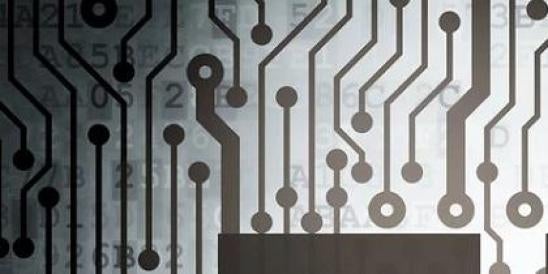The Automotive Body Parts Association (ABPA) brought a declaratory judgement action against Ford Global Technologies (Ford), the holding company for much of Ford Motor Company’s patent portfolio. ABPA argued that design patents are inappropriate for auto-body parts and, in the alternative, that Ford’s design patents were unenforceable against the members of ABPA because the patent rights had exhausted upon the first sale of the vehicle. (Automotive Body Parts Association v. Ford Global Technologies, LLC, Case No. 2:15-cv-10137 (E.D. MI Feb. 20, 2018).) The Court held that Ford’s designs for their vehicle components were indeed eligible for patent protection and further that the design patent rights were not exhausted when the vehicle was first sold. Id. at 2.
A declaratory judgement action is only appropriate when there is a substantial controversy between the parties. In the case of ABPA, Ford had sent warning letters to New World International (New World), a member of ABPA, warning New World that their production of vehicle parts infringed Ford’s design patents. Id. at 3. This led ABPA to file the declaratory judgement action. Ford later agreed to never sue New World on the two design patents at issue in the case, attempting to render the declaratory judgement action moot. Id. at 7. However, this covenant was not extended to the rest of ABPA members, including National Autobody Parts Warehouse, which attempted to purchase for resale patented products and was refused. Id. at 6 and 8. Because ABPA properly brought the suit on behalf of New World and would be able to also bring suit on behalf of other ABPA members, including National Autobody Parts Warehouse, the court found that the controversy between Ford and National Autobody Parts Warehouse was “just substantial and justimmediate enough” that the issue was not moot and that ABPA’s declaratory judgement action was proper. Id. at 7 (emphasis in original).
With regard to ABPA’s summary judgement of invalidity, ABPA argued that Ford’s designs were “not ‘a matter of concern’ and the two designs are ‘dictated by function.’” Id. at 10. The Court found that the proper inquiry was not whether a purchaser of the replacement part was driven by functionality, as argued by ABPA, but instead whether the purchaser of the vehicle at any point (initial purchase or supplemental purchase) was driven by the design of the patented component. Id. at 13. In this regard, the Court noted that in many prior instances, courts had found that design played no role at “any time in the commercial process” or that the “design . . . was never a matter of concern to the purchaser.” Id. (citing Best Lock Corp. v. ILCO Unican Corp., 896 F. Supp. 836, 843 (S.D. Ind. 1995)). Conversely, “the design of an auto-body part is important to consumers at least when they are deciding which car to buy.” Id. at 14.
Further ABPA argued that the designs protected by the Ford patents were dictated by function, noting that the replacement products need to physically fit into the previous space and mate with surrounding parts to match the vehicle’s overall aesthetic and that insurance provisions and government regulations dictate the design of covered products. Id. at 15–16. Regarding the second point, the court noted that “a stroll through a used-car lot (or autotrader.com) reveals” that these alleged regulations do not require replacement parts to be identical. Id. at 16. Regarding the first point, aesthetic-functionality, the Court declined to import in established trademark law to design patent law for three reasons: 1) no court had done so to date, despite the over 100 years of coexistence between the two bodies of law, 2) the two areas of intellectual property serve different purposes (ensuring customer protection and increasing competition versus providing exclusionary rights), and 3) trademark exclusionary rights are perpetual, whereas design patents have a finite term. Id. at 17. The Court further found that there were a number of alternatives that both could be, and had been, used as replacement parts that did not infringe Ford’s design patents, fitting into the vehicles and performed their intended function. Id. at 18. Accordingly, by distinguishing trademark protection from design patent protection, finding that numerous non-infringing alternatives provided the same function as the infringing components, and finding that the alleged governmental and insurance regulations were not as controlling as ABPA alleged, the designs protected by Ford were eligible for design patent protection.
With regard to ABPA’s summary judgement of unenforceability, the Court held that while repair of a patented item is permitted and the replacement of a sub-component of a patented item is permitted, the doctrine of patent exhaustion does not permit a replacement patented item to be made. Id.at 21. The key distinction regarding the auto-body components covered by the design patent was that the patents covered the auto-body components themselves, not the vehicle as a whole. Id. at 23. In this regard, while the purchaser of a vehicle is permitted to use and repair patented headlamps or a patented hood, the purchaser is not authorized to make or have made replacement patented headlamps or a patented hood. Id. As there is “no case dividing patent law . . . creating separate exhaustion doctrines for utility and design patents,” the analysis of what is patented plays key for both utility and design patents. In a multi-component machine where the entire machine is patented, the end purchaser is permitted to replace parts. However, where a purchased product is made up of multiple components all covered by patents, the end user is subject to the patent rights governing those discrete components. Id. at 24.
In summary, trademark law and design patent law remain two distinct bodies of law, patent exhaustion does not provide purchasers a license to have made a patented item, and declaratory judgement actions, while a substantial controversy between two parties is needed, can be properly brought by a trade organization when the original accused infringer no longer is subject to the original controversy.





 />i
/>i